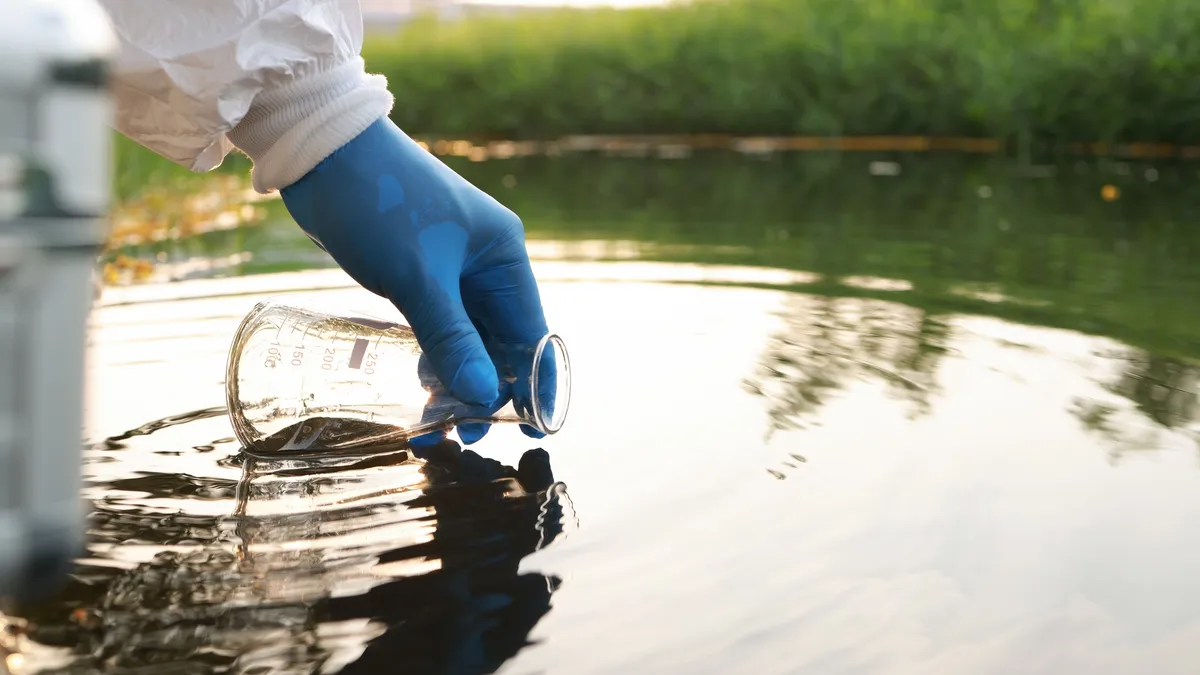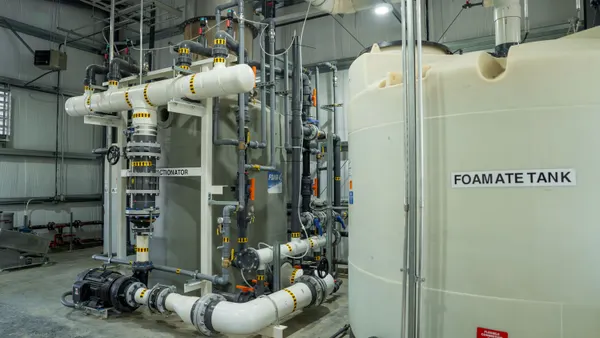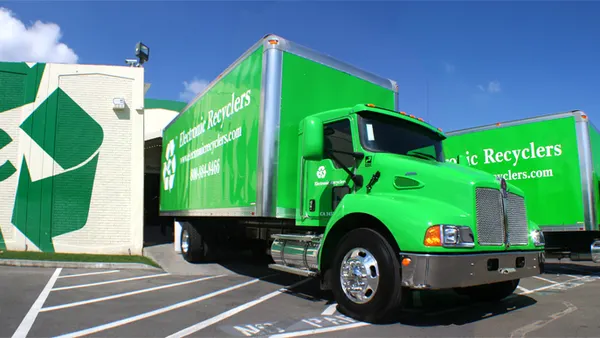The disposal of leachate has always been challenging for waste facilities and landfills. This liquid is generated from water percolating through a solid waste disposal site and may be contaminated with various substances and requires careful handling to avoid environmental and health risks.
And when you add PFAS to the mix – it fundamentally alters the landscape of leachate disposal.
PFAS (Per- and polyfluoroalkyl substances) are pervasive in leachate because they are found in countless consumer products that end up in landfills. As if this was not enough for passive receivers to deal with, the waste and recycling industry is now grappling with new regulatory challenges due to growing concerns over PFAS.
In a nutshell, the EPA has recently set drinking water standards for certain PFAS substances, designated PFOS and PFOA as hazardous substances under CERCLA, and updated guidance on their destruction and disposal.
Although it can be challenging to tackle PFAS removal and management in landfill leachate, it is critical in curbing the spread of dangerous chemicals to our drinking water and environment.
This article explores strategies for managing PFAS in landfill leachate, helping landfill operators navigate the evolving regulatory landscape, and to better understand what solutions to consider.
Understanding leachate and its current challenges
Leachate forms when water percolates through waste materials in landfills, absorbing various chemical compounds along the way. This creates a difficult to treat substance that is teeming with harmful chemicals including PFAS.
Most modern landfills use liners and collection systems to remove leachate from landfills. From there, the leachate must be treated before it can be disposed of properly.
In light of recent PFAS developments, some publicly owned treatment facilities are already imposing limitations on leachate received at their facilities, increasing their charges, or refusing leachate altogether. This leaves many landfill operators facing higher costs and fewer options for landfill leachate disposal.
The PFAS problem
PFAS are a group of synthetic ‘forever chemicals’ widely used in myriad industrial applications and consumer products, from firefighting foams to non-stick cookware. Their resistance to degradation means they accumulate in the environment and human body over time, leading to potential health risks.
As awareness of PFAS risks grows, regulatory agencies are imposing stricter limits on their presence in water and waste. This heightened scrutiny directly impacts leachate management practices within the waste and recycling industry.
Traditionally, leachate management involves collection and treatment processes designed to remove harmful substances before discharge or reuse. However, the presence of PFAS in waste streams significantly complicates this process. PFAS in leachate can impact receiving water bodies including wastewater treatment plants and may limit opportunities for downstream water reuse.
Evolving regulatory landscape
Both federal and state regulations have evolved to address PFAS contamination. For the waste and resource management industry, this means adapting to a regulatory environment that demands more rigorous testing and treatment of leachate. Facilities must ensure that their leachate management systems can effectively reduce PFAS levels to meet regulatory requirements. This often is costly and will most likely lead to skyrocketing operational expenses.
Detecting and quantifying PFAS in leachate is another hurdle. PFAS compounds require precise and sensitive analytical methods for accurate measurement. These complexities add layers of operational and compliance challenges for landfill operators.
What are the treatment options?
Traditional leachate treatment methods, such as biological treatment and activated carbon filtration, may not be sufficient to address the magnitude of the issue.
A bright spot is that innovative PFAS destruction methods have seen a surge in popularity due to recent regulations and the large amount of PFAS found in landfills.
These innovative methods destroy PFAS rather than conventional removal and disposal efforts which do not remove PFAS from our environment. The main advantages of destruction technologies is the ability to skip the costly steps of PFAS removal and disposal—not only monetary costs, but negative environmental externalities as well.
What are the industry implications?
The push for stricter PFAS regulations presents both challenges and opportunities for the waste and recycling industry. Compliance with new standards will require investments in advanced treatment technologies and ongoing research.
This regulatory shift could also drive innovation and position industry leaders as environmental stewards. Companies that proactively address PFAS in leachate management can enhance their reputation, reduce liability risks, and protect human health and the environment.
There are even opportunities for future revenue generation and expansion as many sites start to refuse PFAS laden waste, having the ability to destroy PFAS onsite presents the ability to take on more PFAS waste - think regional PFAS destruction site.
The Future of Leachate Management in a PFAS-regulated World
Looking ahead, it is prudent that the industry plans for further regulatory developments around PFAS. This will likely involve stricter limits and expanded lists of regulated PFAS compounds. Therefore, proactive adaptation and continuous improvement in leachate treatment technologies will be essential.
The reality is that with increased scrutiny – risks become higher. Staying informed about regulatory changes and emerging treatment methodologies will be vital for landfill operators to manage leachate effectively.
Aclarity’s cutting-edge solutions are transforming the field of PFAS remediation. Its low-energy PFAS destruction technology can be deployed onsite to ensure rapid and effective elimination of PFAS. This approach enables landfills and manufacturing facilities to tackle these persistent ‘forever chemicals’ helping to end their lifecycle.
If you are interested in getting a complimentary PFAS evaluation, fill out this form and an Aclarity expert will set up a time to discuss. Being proactive is a great way to help bring peace of mind during this uncertainty.
About the Author
Leanne Hersey serves as Vice President of Marketing at Aclarity, a PFAS destruction technology company based in Massachusetts. Leanne has more than a decade of experience in bringing disruptive B2B technologies to market in industries such as industrial water treatment, carbon nanotube manufacturing, and residential construction. Aclarity’s mission is to destroy PFAS forever. The team develops, deploys, and services full-scale proprietary electrochemical oxidation systems to permanently destroy PFAS chemicals in liquid waste for landfills and industrial facilities globally. Leanne can be reached at info@aclaritywater.com or visit www.aclaritywater.com.
About Aclarity
Aclarity’s mission is to destroy PFAS forever. The team develops, deploys, and services full-scale proprietary electrochemical oxidation systems to permanently destroy PFAS chemicals in liquid waste for industrial facilities globally.










